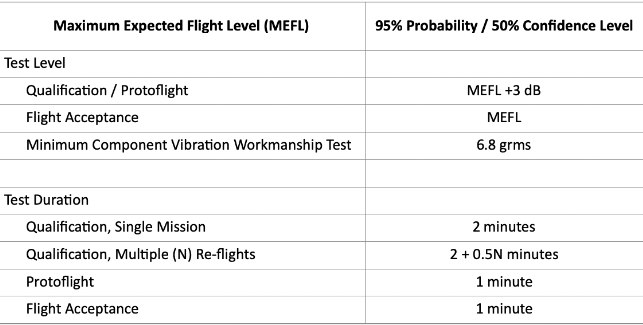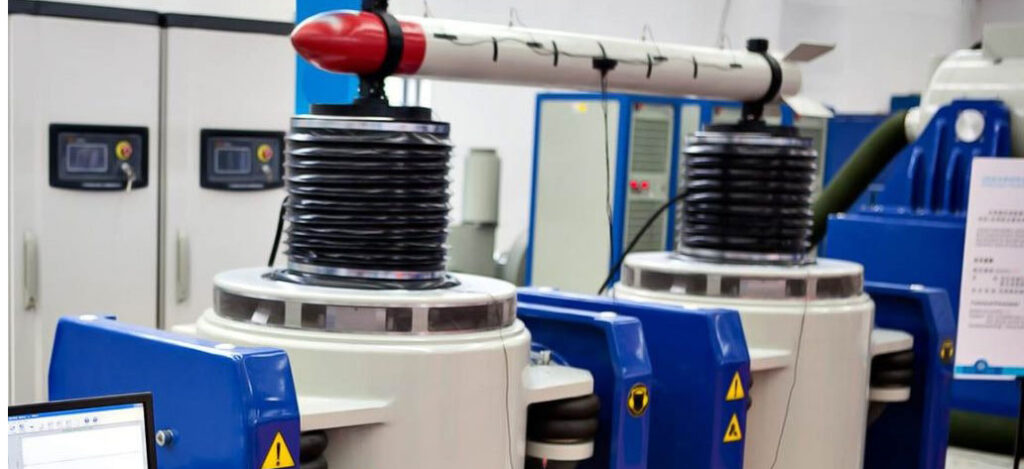Nasa-std-7002b is a standard document developed by NASA that Outlines the procedures and requirements for vibration testing of shakers on aerospace hardware. The NASA-std-7002b dynamic vibration testing method is widely used in the aerospace industry to ensure the structural integrity and reliability of spacecraft and their components.
Unlike rigorous Sine dwell vibration testing, random vibration table testing is often considered a mandatory test at the component level to ensure that it can withstand random vibration environments in practical applications. However, when there is evidence that components are sensitive to random vibration environments, random vibration table testing may also be required at the subsystem and payload/spacecraft unit levels.
According to technical standards, the purpose of random vibration table testing is to simulate the random vibration conditions that a component may encounter in a real task environment and to screen out potential problems that may exist in all electrical, electronic and electromechanical components through testing. In addition, random vibration testing may also be required for parts that are subject to random vibrations of mechanical transmission caused by the vibrational acoustic environment.
The level and duration of random dynamic vibration testing are not fixed values, but are determined according to statistical principles and the requirements of the actual task environment.

Sine dwell vibration testing is generally considered a mandatory test at the subsystem and payload/spacecraft unit level to ensure that it can withstand the low-frequency vibration environment that may be encountered during launch. Sinusoidal vibration testing can also be performed at the component level when there is evidence that a component is sensitive to this vibration environment.
According to the technical standards, the Sine dwell vibration testing simulates the low-frequency dynamic emission environment predicted by coupled load analysis (CLA), and also simulates the sinusoidal vibration environment that may exist in flight. In addition, sine dwell vibration testing meets the requirements of the launch vehicle provider to demonstrate that the subsystem and payload spacecraft unit can withstand the low-frequency launch environment to ensure safe and stable operation during launch.
Sinusoidal sweep vibration (5 to 50 Hz [Hz]) ELV and STS pavloads. Sinusoidal scan vibration testing should be performed to ensure that the hardware can adapt to the low-frequency (less than 50 Hz) sinusoidal transient or persistent sinusoidal environments present in flight. These tests should be conducted at 1.25 times the flight limit level and at a scanning rate of 4 octaves per minute. Other scanning rates can be used to simulate specific flight events. The minimum probability level used to define the flight limitation level is P97.72/50 for the ELV payload. This is equal to the mean of the normal distribution plus 2 sigma. Sinusoidal vibration is suitable for STS payloads only when there is a need to simulate a continuous periodic environment from an upper level or 1 apogee engine, for example. For the STS payload, the minimum probability level used to define the flight limitation level is P99.87/50. This is equal to the mean of the normal distribution plus 3 sigma.
Before the dynamic vibration testing, the test fixture needs to be checked for resonance, and the inspection range covers at least 2000 Hz. Ideally, the fixture should not resonate in the test frequency range. The test sample should be fixed to the fixture by its flight or flight equivalent mounting attachment to simulate the actual mounting manner.
In order to meet the needs of dynamic vibration testing, it is necessary to choose the appropriate vibration shaker machine and test equipment. The vibration shaker machine should have sufficient load capacity to withstand the weight of the aerospace product, but also have sufficient frequency response range to cover the frequency range required for the test.
For precise control of the dynamic vibration testing, the control accelerometer should be mounted on the test fixture, near the connection point. If multiple control accelerometers need to be used, the test level can be integrated through average values or other control schemes to ensure the accuracy and consistency of the test.
Stroke length: The stroke length of the vibration shaker machine should be long enough to meet the requirements of the product vibration test. Stroke length refers to the maximum displacement or range of displacement that a vibration shaker machine can provide and is important for simulating different types of vibration.
We offer professional vibration shaker machine covering the shock force range of 1KN to 600KN to meet the demanding test requirements of the aerospace industry. Please contact us for more detailed solutions and technical support.
